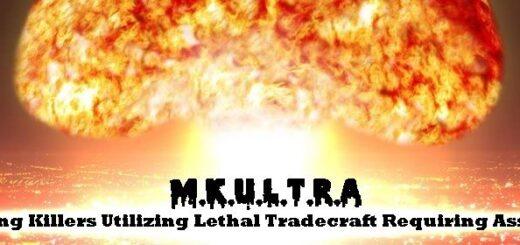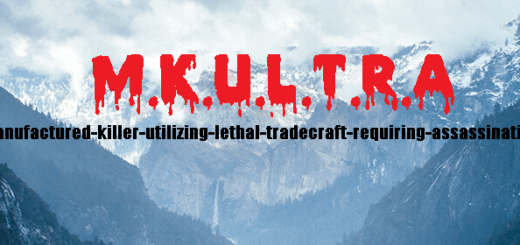LEGALIZING MAGIC MUSHROOMS
INSIDE THE PUSH TO LEGALIZE MAGIC MUSHROOMS FOR DEPRESSION AND PTSD
Posted on February 8, 2019 by Soren Dreier
Author: WiredFebruary 8, 2019

When Todd’s psychiatrist suggested he start taking psychedelics, he figured it was a joke.
It wasn’t. The former corporate executive from Colorado retired in 2006 after an MRI revealed his spine was riddled with a dozen tumors called hemangiomas, which later spread to his brain. Todd was told he would die before the end of 2008.
Somehow, Todd has survived—he credits medical marijuana, which he now uses daily—but he is still considered terminal. “It could be tomorrow. It could be five years from now,” he says in a call.
However, the 54-year-old spent the past decade plagued by a host of mental health problems, including PTSD and treatment-resistant depression. He was suicidal and tormented by violent night terrors. Nothing, not even massive doses of Xanax or Valium, could temper his panic attacks or end-of-life anxiety.
“My mental condition was deteriorating rapidly, and I was on [antidepressant] medication No. 14 and it wasn’t working,” Todd says. “My psychiatrist said, ‘I honestly think you’re a big candidate for psychedelics.’”
That was about a year ago. Todd began taking homegrown psilocybin, the highly illegal alkaloid in so-called magic mushrooms. Known for prompting profound hallucinations, psilocybin was placed in the restrictive Schedule I category in 1970, meaning the US government recognizes no medical use for the drug and says that it carries a high risk of abuse.
Todd says there have been clear benefits from psilocybin with few side effects. He hasn’t had a single PTSD episode since he began taking it. His depression evaporated. The mushrooms even help ease the pain—agony that feels like being “shot in the back”—from the nerve-crushing tumors in his spine and skull.
“It’s knocked that out, it’s wiped that slate clean,” Todd says. The day before we talked, he’d eaten eight grams of fungus. A heavy dose is considered five grams, so this was no psychedelic snack—but Todd ingests this much about every week.
The experience is positively hypnagogic, allowing trippers to enter a dreamlike conscious state where time is distorted, color is amplified, and depth perception is warped. Euphoric, unbridled laughter is common, as are oddly introspective thoughts about existence and reality, and even synesthetic sensations, such as being able to “see” sounds. A trip can last four to six hours.
There can be negative effects as well, such as nausea, dizziness, paranoia, or panic attacks, but Todd doesn’t experience those. He still takes 10 milligrams of escitalopram, an antidepressant, and when the mushrooms wear off, 30 milligrams of the opioid oxycodone, but otherwise his prescription drug intake has drastically decreased.
Todd asked me not to use his real name, fearful that his health insurance provider could sever benefits because he uses illicit substances. But his doctors are aware and supportive of his psychedelic drug use, he says, which may legally exempt him under the federal Right To Try Act for terminally ill patients, signed by President Trump last May.
Indeed, magic mushrooms are having a therapeutic moment. In North America, at least four organizations, each with unique strategies, are working to expand access to psilocybin for anyone with mental health issues, dying or not. These groups hope to undo decades of psilocybin prohibition by removing criminal penalties for possession or cultivation, or by providing access to psilocybin in a therapist’s offices, or both.
They cite a small but growing body of research suggesting psychedelic drugs can, in fact, be medically beneficial with low potential for addiction or abuse. Some small studies suggest that psilocybin can alleviate obsessive-compulsive disorder, treatment-resistant depression, end-of-life anxiety, addiction, cluster headaches, and, yes, relieve pain. There’s also growing evidence that ingesting the drug can promote optimism and prosocial and mystical worldviews, and nurture well-being.
In just a few years, pockets of psilocybin-legal jurisdictions could appear, following the similar path that medical marijuana took to mainstream acceptance. The leaders of this movement include Compass Pathways, a UK startup developing psilocybin therapy for treatment-resistant depression in North America and Europe.
There are also two psilocybin grassroots movements, one in Oregon and another in Denver. If voters approve the Oregon Psilocybin Service Initiative in 2020, the state would develop a licensed psilocybin therapist industry and lower criminal penalties for growing or consuming mushrooms. Denver city voters may also get to decide whether to decriminalize personal possession and use of mushrooms—a voter initiative just gathered enough signatures to appear on the May ballot.
Finally, there’s TheraPsil, a group of seven Canadian health care professionals who formally announced their intent to challenge the illegality of psilocybin by petitioning Health Canada to allow access to mushrooms in a medical setting for terminal patients.
These little saprophytes—organisms that devour dead or decaying organic matter—are indeed enjoying a resurgence in popularity. But there are still numerous obstacles before psilocybin goes from black market hallucinogen to psychedelic medicine.
The Swiss chemical company Sandoz began in 1886 as a dye manufacturer, later pivoting to pharmaceuticals. But in 1947, with the help of one of their lead scientists, Albert Hofmann, the business began producing a psychiatric drug they called Delysid. Most people know it as LSD.
The psychedelic showed promise for treating mental health problems, but an LSD trip can last eight to 12 hours, so Sandoz sought a shorter-acting alternative. In 1958 Hofmann became the first to isolate psilocybin from mushrooms, subsequently developing a synthetic version called Indocybin. He first tried it on himself. Indocybin was safely marketed from 1961 until a rising cultural backlash against psychedelics led Sandoz to discontinue sales in 1966.
Now, more than 50 years later, a company is looking to pick up where Sandoz left off. Compass Pathways was founded in 2016 by George Goldsmith and Ekaterina Malievskaia, a married couple from London with little experience in the pharmaceutical industry. When their son developed treatment-resistant depression and OCD, they were desperate for help.
“The more they were treating him, the worse he was getting,” Malievskaia says in a call. So they took matters into their own hands. They began looking into scientific reports that psilocybin can rapidly reverse symptoms of depression for patients who have tried other approaches without results. And unlike Todd, these patients took only a single dose, not one per week.
Compass, which has reaped about $31.5 million in Series A investment, is conducting two studies to see how viable psilocybin is for psychotherapy. The first, due to finish in early 2019, is a double-blind placebo-controlled trial planned with 90 healthy volunteers to evaluate cognitive and emotional function. The study is also helping to train Compass’ therapists.
The Food and Drug Administration recently granted the company “breakthrough” therapy status for its second study, giving Compass priority review, following approval in August of a phase IIB clinical trial, designed to establish proper dosing.














